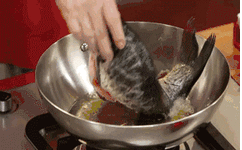1. Foods that lower lipids, reduce blood pressure, and prevent vascular sclerosis
Such as seaweed, nori, hawthorn, black fungus, mushrooms, garlic, onions, tea leaves, lotus leaves, lotus seeds, celery, water chestnuts, jellyfish, honey, etc.
2. Foods that prevent atherosclerosis
In recent years, some foods such as ginger, milk, soybeans, mushrooms, garlic, onions, soft-shelled turtle, and marine fish oil have been found to have preventive effects on atherosclerosis and to lower hyperlipidemia.
3. Foods with detoxifying effects
Such as tomatoes and mung beans for clearing heat and detoxifying;
Tea leaves and white lentils as detoxifying agents;
Goat blood and water spinach can detoxify from mushroom poisoning;
Garlic can inhibit bacteria and detoxify; honey can neutralize poisons.
4. Foods with anti-inflammatory effects
Such as garlic, spinach roots, reed roots, purslane, winter melon seeds, rapeseed, and water chestnuts.
5. Foods that lower blood sugar and quench thirst
Such as pig pancreas, mare’s milk, yam, cowpeas, peas, water bamboo, bitter melon, and onions.
6. Foods that clear heat and detoxify
Such as watermelon, winter melon, cucumber, bitter melon, mung beans, lentils, black plums, pineapples, and field snails.
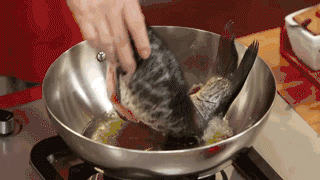
7. Foods that eliminate dampness and promote diuresis
Such as watermelon, watermelon rind, winter melon rind, tea leaves, mung beans, adzuki beans, corn silk, gourd, carp, and black fish.
8. Foods that strengthen the spleen and stomach
Such as ginger, black plums, chicken gizzards, malt, dried tangerine peel, Sichuan pepper, fennel, scallions, garlic, vinegar, and hawthorn.
9. Foods that clear the throat and benefit the voice
Such as green fruits, black plums, bitter melon, and cool yam.
10. Foods that moisten the intestines and relieve constipation
Such as walnut kernels, sesame, pine nuts, cedar nuts, bananas, and honey.
11. Foods that suppress cough and expel phlegm
Such as ginkgo, almonds, peach kernels, winter melon seeds, tangerines, pears, rock candy, radishes, and animal bile.
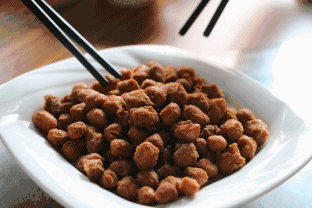
12. Foods that stop bleeding
Such as peanut skins, day lilies, black fungus, lotus pods, lotus root charcoal, loofah charcoal, and cuttlefish bones.
13. Foods that nourish
Such as maltose, jujubes, peanuts, lotus seeds, and yam to nourish the spleen and stomach;
Lamb, turtle meat, walnuts, chives, sea cucumbers, and shrimp can tonify Yang;
Longan, red dates, mulberries, and lychees can nourish blood;
Fish maw, soft-shelled turtle, and black and white fungus can nourish Yin;
Animal liver can nourish the liver and improve vision.
14. Foods that expel parasites
Such as betel nut, nut pine, areca nut, black plums, garlic, pumpkin seeds, coconut, and carrot seeds.
15. Foods that produce milk
Such as crucian carp, pig trotters, fish heads, and raw pumpkin seeds.
16. Foods that prevent colds
Such as vinegar, garlic, scallions, ginger, fermented soybeans, and cabbage.
Comprehensive Dietary Therapy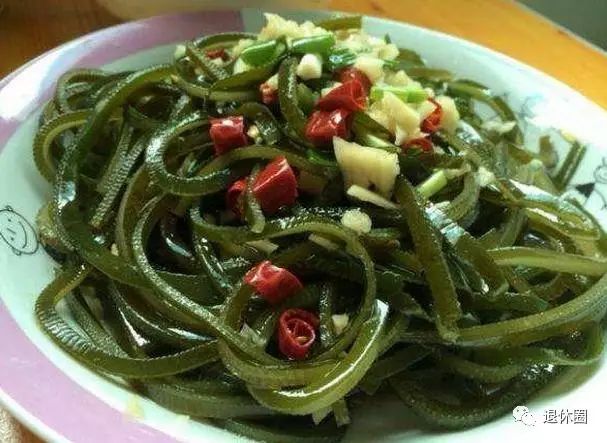
Kelp
Therapeutic effects: Kelp has the effects of lowering blood pressure, reducing cholesterol, preventing atherosclerosis, preventing cardiovascular and cerebrovascular diseases, enhancing immunity, and resisting tumor occurrence.
Precautions: When washing and soaking kelp, do not remove the white frost attached to it. This white frost has the effects of lowering blood pressure and promoting diuresis, which is beneficial to the body.
Nori
Therapeutic effects: Nori has the effects of clearing the lungs, resolving phlegm, lowering cholesterol, promoting metabolism, enhancing memory, and has certain anti-cancer and beauty effects.
Precautions: Not suitable for those with cold stomach, spleen deficiency, or loose stools.
Pumpkin
Therapeutic effects: Pumpkin has the effects of tonifying the middle and benefiting Qi, moistening the lungs and resolving phlegm, anti-inflammatory and analgesic, detoxifying and expelling parasites. It is commonly used to treat asthma, burns, scalds, ascariasis, and has special dietary therapy effects for diabetes, hepatitis, cirrhosis, nephritis, cataracts, and hyperlipidemia.
Precautions: Avoid eating if there is warm heat stagnation. Old pumpkins that have been stored for a long time, with rotten skin and an unusual smell, should not be consumed.

Bitter Melon
Therapeutic effects: Bitter melon has the effects of clearing summer heat and expelling heat, brightening the eyes and detoxifying, nourishing blood and benefiting Qi, and has dietary therapy effects for heat diseases, thirst, heat stroke, dysentery, red eyes, carbuncles, and ulcers.
Precautions: Avoid excessive consumption of bitter melon due to its high oxalic acid content, which affects calcium absorption.
Cucumber
Therapeutic effects: Cucumber is cool in nature and sweet in taste, with the effects of clearing heat and detoxifying, helping to lower cholesterol, and has auxiliary effects in treating sore throat and conjunctivitis, as well as moisturizing the skin and preventing pore blockage.
Precautions: Patients with gastrointestinal diseases should not consume it in excess.
Luffa
Therapeutic effects: It has the effects of expelling wind and dampness, unblocking meridians, clearing heat and benefiting the throat, resolving phlegm and stopping cough, cooling blood and detoxifying, and can clear heat and moisten the intestines, quench thirst, and relieve summer heat; it has effects in preventing scurvy, promoting brain development in children, and maintaining brain health in the elderly.
Precautions: Not suitable for those with weak bodies, spleen and stomach deficiency, or diarrhea.
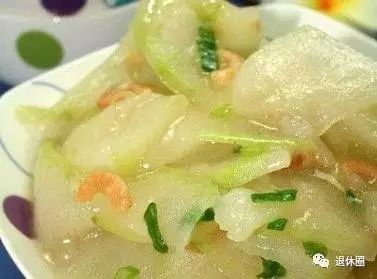
Winter Melon
Therapeutic effects: Winter melon is cool in nature and sweet in taste, with the effects of quenching thirst, clearing heat and detoxifying, promoting diuresis and expelling dampness, and reducing swelling. It helps prevent and treat beriberi, gonorrhea, edema, and heat toxins. It can make the complexion rosy and radiant, and helps prevent and treat dark spots and chloasma.
Precautions: Not suitable for excessive consumption in those with spleen and stomach deficiency and cold.
Lotus Root
Therapeutic effects: Lotus root has a strong hemostatic effect and is effective for various bleeding disorders in the body. It can also prevent diabetes, hypertension, and anemia, making it a beauty food.
Precautions: Patients with stomach diseases and duodenal ulcers should avoid it. When cooking, do not use iron pots to prevent lotus root from turning black.
Asparagus Lettuce
Therapeutic effects: It can unblock meridians, promote urination, aid digestion, and expel parasites. It has certain dietary therapy effects for urinary difficulties, insufficient milk secretion, hypertension, heart disease, and kidney disease, and is also beneficial for preventing and treating neurasthenia and rickets in children.
Precautions: Not suitable for those with spleen and stomach deficiency.
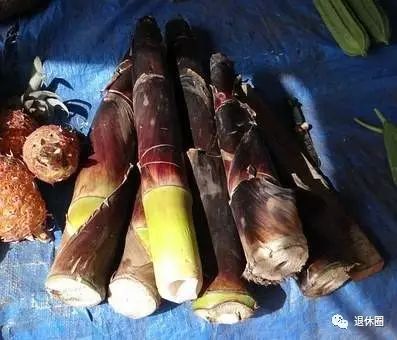
Bamboo Shoots
Therapeutic effects: Sweet in taste and cold in nature, it has the effects of clearing heat, resolving phlegm, aiding digestion, and reducing qi. It can also lower cholesterol, prevent cancer, and assist in weight loss.
Precautions: Not suitable for those with spleen deficiency and loose stools.
Radish
Therapeutic effects: Radish contains substances that promote metabolism, helping to eliminate subcutaneous fat, thus aiding in weight loss. It also has effects in lowering blood pressure and preventing gallstone formation, as well as anti-cancer properties.
Precautions: Not suitable for excessive consumption in those with diarrhea or digestive disorders.
Carrot
Therapeutic effects: Carrot is neutral in nature and sweet in taste, with the effects of strengthening the spleen, resolving stagnation, moistening dryness, brightening the eyes, lowering blood pressure, strengthening the heart, increasing appetite, and anti-cancer properties. It can maintain eye and skin health and enhance the body’s anti-cancer immunity, with dietary therapy effects for digestive disorders, night blindness, dysentery, hypertension, and diabetes.
Precautions: When stir-frying carrots, oil should be added or cooked with meat to enhance the release of carotenoids from plant cells, facilitating absorption by the body.
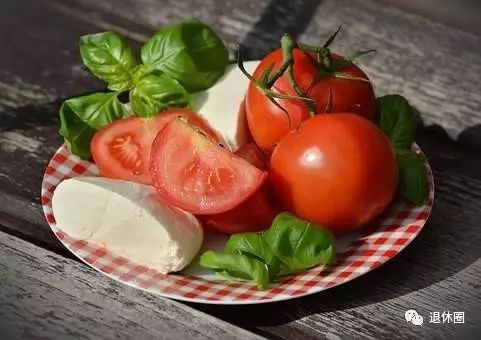
Tomato
Therapeutic effects: It has the effects of generating fluids and quenching thirst, clearing heat and detoxifying, promoting digestion, and cooling blood and calming the liver, with dietary therapy effects for hypertension, night blindness, dry eye syndrome, and kidney disease.
Precautions: Not suitable for excessive consumption in those with weak stomachs, excessive gastric acid, or rheumatic diseases. Avoid eating unripe tomatoes.
Green Pepper
Therapeutic effects: Green pepper, also known as bell pepper, is warm in nature and sweet in taste, with the effects of aiding digestion, promoting fat metabolism, and beautifying the skin. It can prevent atherosclerosis, hypertension, diabetes, freckles, and dark spots.
Precautions: Stir-frying green peppers should be done quickly over high heat to retain nutrients. Patients with arthritis or rheumatoid arthritis should avoid excessive consumption.
Eggplant
Therapeutic effects: Eggplant, also known as brinjal, is cold in nature and sweet in taste, with the effects of unblocking meridians, resolving blood stasis, reducing swelling and pain, treating cold and heat, and stopping bleeding. It can enhance the elasticity of capillaries, prevent microvascular rupture and bleeding, maintain normal platelet function, promote wound healing, and has preventive effects for hypertension, atherosclerosis, hemoptysis, purpura, and scurvy.
Precautions: Not suitable for excessive consumption in those with chronic diarrhea or digestive disorders.
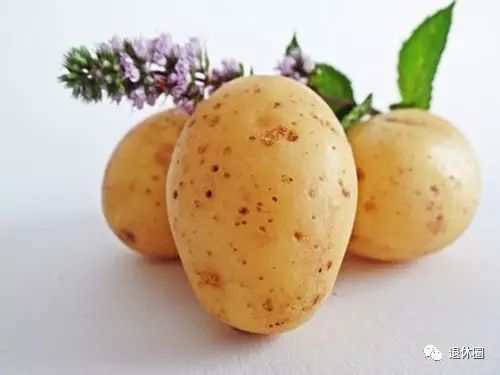
Potato
Therapeutic effects: Regular consumption of potatoes can prevent fat deposition in the cardiovascular system, maintain the elasticity of blood vessels, and prevent atherosclerosis.
Precautions: Sprouted or rotten potatoes should not be consumed, as they can cause vomiting, diarrhea, and even convulsions or coma.
Broccoli
Therapeutic effects: Broccoli is neutral in nature and sweet in taste, with the effects of nourishing the kidneys and brain, and preventing cancer, making it a health-promoting vegetable.
Precautions: In Western cuisine, it is often eaten raw in salads, while in Chinese cuisine, it is mainly cooked.
Cauliflower
Therapeutic effects: Regular consumption can prevent and treat diseases, being a good remedy for hepatitis, cough, and pulmonary tuberculosis, and has anti-cancer effects, reducing the incidence of stomach cancer, rectal cancer, breast cancer, lung cancer, and upper respiratory tract tumors.
Precautions: Cauliflower often has residual pesticides and is prone to insects. Therefore, it should be soaked in salt water for a few minutes before consumption to drive away insects and remove residual pesticides. Additionally, it should be chewed well to aid nutrient absorption.
Spinach
Therapeutic effects: Spinach has the effects of benefiting the five organs, invigorating blood circulation, unblocking the intestines and stomach, opening the chest, and nourishing Yin and blood. Regular consumption of spinach also has certain effects in preventing oral inflammation and dermatitis.
Precautions: Not suitable for those with spleen and stomach deficiency or diarrhea. Additionally, those with low calcium, osteoporosis, or those currently supplementing calcium should avoid spinach.
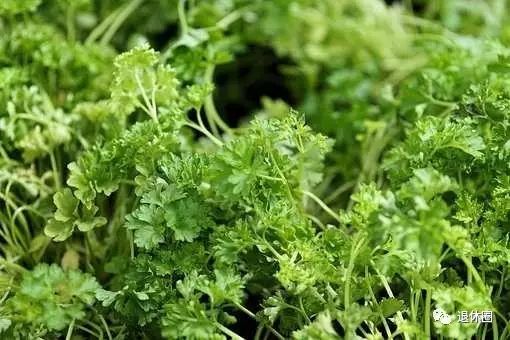
Cilantro
Therapeutic effects: Cilantro has the effects of inducing sweating and relieving rashes, aiding digestion, and promoting appetite, detoxifying and expelling wind, and promoting blood circulation.
Precautions: Not suitable for those with Yin deficiency or skin itching.
Shiitake Mushroom
Therapeutic effects: Shiitake mushrooms have the effects of tonifying Qi and nourishing blood, strengthening the spleen and aiding digestion, benefiting the kidneys and stomach, expelling wind and invigorating blood, resolving phlegm, anti-cancer, and anti-aging. They have certain dietary therapy effects for anemia, hepatitis, tumors, rickets, measles, and loss of appetite.
Precautions: Shiitake mushrooms should not be soaked in cold water.
Mushrooms
Therapeutic effects: Mushrooms are cool in nature and sweet in taste, with the effects of lowering blood sugar, lowering cholesterol, preventing atherosclerosis and liver cirrhosis, enhancing immunity, and having antibacterial properties. They have dietary therapy effects for diabetes, liver disease, hypertension, and cardiovascular diseases.
Precautions: Do not randomly pick wild mushrooms to eat to avoid poisoning.
Chives
Therapeutic effects: Chives can lower blood pressure, enhance intestinal peristalsis, and are beneficial for patients with hyperlipidemia and coronary heart disease, and can also prevent colon cancer.
Precautions: Patients with stomach diseases, duodenal ulcers, diarrhea, eye diseases, and sores should avoid chives. Amaranth Nutritional components: Contains protein, fat, carbohydrates, fiber, carotenoids, vitamins B1, B2, C, folic acid, calcium, phosphorus, iron, etc.
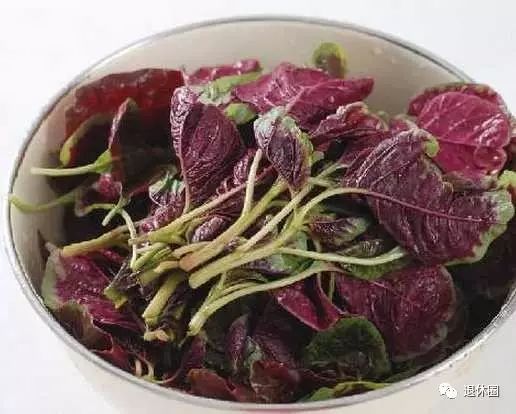
Amaranth
Therapeutic effects: Amaranth is cold and slippery, with the effects of clearing heat and detoxifying, astringing and stopping bleeding, and has therapeutic effects for enteritis, constipation, and goiter.
Precautions: Amaranth contains a lot of oxalic acid, so it is best to blanch it in boiling water before cooking to dissolve the oxalic acid in water and remove the astringent taste. Not suitable for those with spleen deficiency or loose stools.
Mustard Greens
Therapeutic effects: Mustard greens are fleshy herbs that have diuretic, blood pressure-lowering, and intestinal motility-enhancing effects.
Precautions: Mustard greens are cold in nature, so avoid excessive consumption.
Lettuce
Therapeutic effects: Lettuce promotes blood circulation, clears heat and promotes diuresis, strengthens the stomach and generates fluids, quenches thirst and relieves irritability, unblocks meridians, and benefits the five organs.
Precautions: It is suitable for short-term storage at low temperatures of 1-2 degrees and 90%-95% relative humidity, and should be kept away from foods like apples, bananas, and pears.
Cabbage
Therapeutic effects: It has the effects of relieving chest tightness and irritability, tonifying the kidneys and strengthening bones, nourishing the brain and filling the marrow, stopping pain and promoting muscle growth, and detoxifying and aiding digestion. It can promote blood circulation and enhance appetite, with certain dietary therapy effects for chronic cholecystitis, chronic ulcer disease, kidney deficiency, and stomach diseases.
Precautions: Patients after abdominal and thoracic surgery, those with liver disease, and those with excessive gastric acid should avoid it.

Chinese Cabbage
Therapeutic effects: Chinese cabbage is cold in nature and has effects in preventing and treating colds and fever with cough. The dietary fiber in Chinese cabbage can stimulate intestinal peristalsis, helping to expel food residues left in the intestines and clear toxins from the body. Regular consumption is also beneficial for treating headaches, eye pain, and abdominal distension.
Precautions: When cooking, it is advisable to add old ginger to prevent cold air, and cooking with meat can also reduce its cold nature.
Celery
Therapeutic effects: Celery has the effects of clearing heat and stopping cough, lowering blood pressure and lipids, calming the liver and cooling the blood, strengthening the stomach and promoting diuresis, and has anti-inflammatory and regulating menstrual effects. Regular consumption of celery can have auxiliary effects in preventing tuberculosis, relieving irritability, and eliminating blood stasis.
Precautions: Not suitable for patients with blood deficiency. Water Bamboo Nutritional components: Protein, fat, carbohydrates, calcium, acid, iron, vitamin C, etc.
Water Bamboo
Therapeutic effects: It has the effects of clearing heat, generating fluids, promoting diuresis, and relieving dampness. It can eliminate heat and irritability, quench thirst, promote urination, and stop heat dysentery, with dietary therapy effects for lowering blood pressure, promoting lactation, clearing damp heat, and detoxifying. It also has effects in regulating the intestines and relieving irritability.
Precautions: Not suitable for those with spleen weakness and diarrhea.
Garland Chrysanthemum
Therapeutic effects: Garland chrysanthemum is rich in nutrients, with effects of promoting qi and regulating qi, calming the mind, and warming the stomach, suitable for those with cold in the intestines and stomach. Due to its high vitamin A content, eating more can help resist respiratory infections, prevent vision decline, and promote the healthy growth of skin, hair, teeth, and gums.
Precautions: Garland chrysanthemum has a unique taste that not everyone can accept, and those with sensitive stomachs may feel chest tightness after eating it.
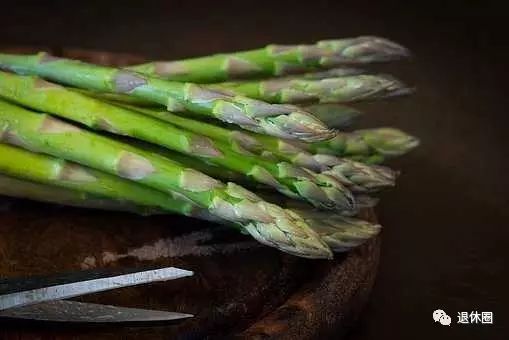
Asparagus
Therapeutic effects: It has the effects of strengthening the spleen, benefiting Qi, nourishing Yin, moistening dryness, and generating fluids to quench thirst. It has preventive and therapeutic effects for various cancers, especially for bladder cancer, lung cancer, and skin cancer patients.
Precautions: Asparagus should not be eaten raw and should not be stored for more than a week before consumption. Water Chestnut Nutritional components: Protein, fat, carbohydrates, calcium, phosphorus, iron, vitamins B, C, etc.
Garlic
Therapeutic effects: The volatile oil in garlic is a mixture of sulfides, which has a distinctive smell. The disulfides and allicin contained have antibacterial properties, can inhibit bacterial growth, and can expel parasites, helping to prevent and treat influenza, typhoid, cholera, dysentery, and parasitic diseases. The allicin in garlic has a disinfecting effect, can adjust the intestines, and eliminate putrefactive substances in the intestines, thus preventing colon cancer.
Precautions: Due to its pungent and warm nature, garlic should not be consumed by those with internal heat or inflammation, and those with eye diseases or myopia should avoid excessive consumption.
Scallion
Therapeutic effects: Scallions are pungent in taste and warm in nature, with effects of reducing swelling, detoxifying, inducing sweating, and expelling wind. They can promote digestion, enhance appetite, stop vomiting, and treat abdominal distension and discomfort in the chest. They can also invigorate the nerves and help promote the function of sweat glands, preventing and treating colds.
Precautions: Those with eye diseases or myopia should avoid excessive consumption.
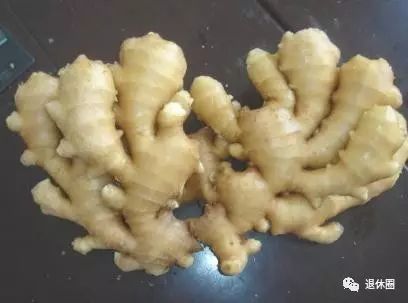
Ginger
Therapeutic effects: Ginger is slightly warm and pungent, with effects of stopping vomiting, detoxifying, inducing sweating, and expelling wind, promoting blood circulation, and can help treat headaches, coughs, external wind-cold, stomach cold, and vomiting, making the complexion rosy.
Precautions: Not suitable for those with internal heat.
Chili Pepper
Therapeutic effects: Chili pepper is hot and pungent, with effects of strengthening the stomach and enhancing appetite. It can help treat rheumatic pain, muscle pain, digestive disorders, and hair loss, improving digestive disorders and promoting metabolism.
Precautions: Patients with gastric ulcers, duodenal ulcers, and acute gastritis should avoid excessive consumption.
Comprehensive Fruit Therapy
[1]
Anemia: Grapes, oranges, tomatoes, apples, strawberries, cherries
High cholesterol: Mangosteen, walnuts
Hypertension: Bananas, watermelons, grapes, tomatoes, walnuts, persimmons, peaches
Atherosclerosis: Apples, avocados, walnuts, tomatoes, bananas
Stroke: Apples, persimmons, pineapples, kiwis
Heart disease: Apples, kiwis, pears, watermelons, pineapples, walnuts, bananas
Respiratory system, trachea, lung diseases, bronchitis: Grapes, apples, cherries, pears, persimmons
Asthma: Grapes, peaches
Pulmonary tuberculosis: Pears, peaches, loquats, papayas
Digestive system, gastrointestinal, liver diseases, gastritis: Apples, grapes
Enteritis: Pineapples, bananas, apples, grapes, tomatoes, pomegranates
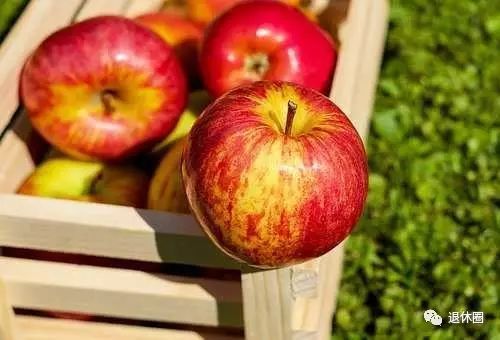

[2]
Diarrhea: Apples, bayberries
Stomach pain: Papaya
Indigestion: Pears, strawberries
Hemorrhoids: Apples, persimmons, peaches, bananas, figs
Liver disease: Strawberries, plums, apples, grapes, bananas
Urinary system diseases, cystitis: Watermelons, peaches
Ureteral stones: Watermelons, kiwis
Urinary incontinence: Peaches, plums
Urethritis: Peaches, grapes
Endocrine disorders: Avocados, apples, kiwis, grapes, peaches, cantaloupes, papayas

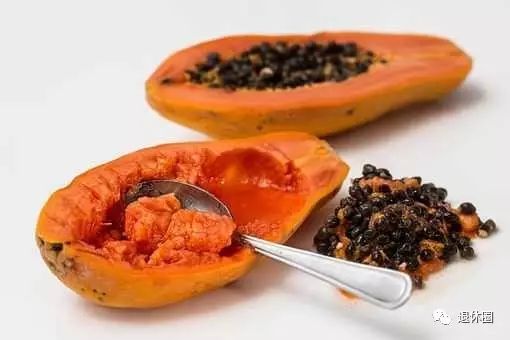

[3]
Eye, ear, throat diseases: Papaya
Hoarseness: Grapes, loquats
Night blindness: Papaya
Bone, joint, skin diseases: Grapes, loquats
Quick healing after surgery: Strawberries
Back pain: Kiwis, watermelons, pears, citrus
Lower back pain: Peaches
Gout: Kiwis, pineapples
Arthritis: Grapes, loquats
Trauma: Papaya

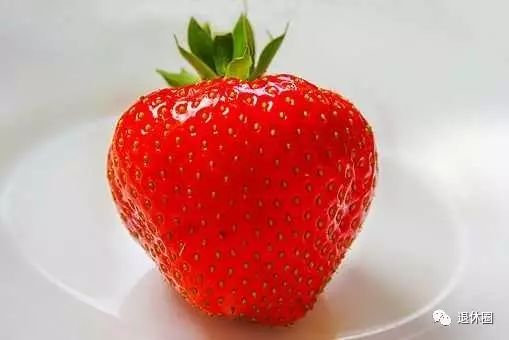

[4]
Skin diseases: Papaya, strawberries, apples, walnuts
Oral inflammation: Pears, oranges, pomegranates
Dental diseases: Strawberries, oranges, plums
Cold: Strawberries, mangoes, pineapples, loquats, lemons
Pregnancy nausea: Pears, apples, persimmons
Postpartum recovery: Apples, walnuts
Increase stamina, anti-aging: Apples, bananas, walnuts
Poor appetite: Grapes
Promote growth: Apples, pears, bananas, strawberries, cantaloupes, watermelons


